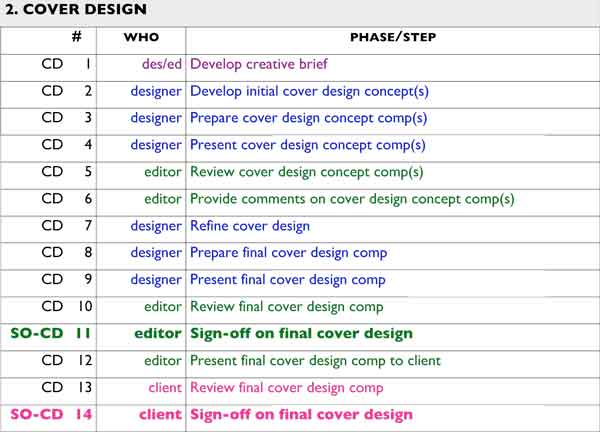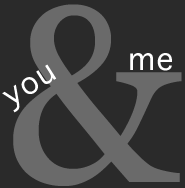Warning: today’s post is a wee bit geeky, but if you do as I suggest, it will make your project management life so much better. [Like cod liver oil in orange juice – tastes yukky but good for you. At least that’s what my mother used to tell me.]
Last week I did a teleclass called Workflow: key to a profitable personal history business and in the process of preparing for it, I put together a list of seven phases of the book design and production process, along with the tasks and milestones in each phase.
Here is a portion of it:

Although this may seem like overkill, it actually is clarifying. The thinking process that breaks the Cover Design phase into discrete units of work defines when one task is completed and the next one begins. It has, as a friend says, “crisp edges”.
Here’s how to get started:
- Break the overall project into phases. For the book design I do for private publishers, I have seven phases: book design, cover design, photos & memorabilia, other graphic elements, manuscript & other copy, page layout, and printing & binding.
- Break the work of each phase into discrete tasks that can be expressed in the form subject – verb – object: Who does what and what tangible product results?
- Use a controlled and consistent vocabulary. Although there are fourteen tasks listed above, there are only seven verbs: develop, prepare, present, review, provide, refine, sign-off. These verbs are used consistently throughout all seven phases of the workflow process. [There are some other verbs used in other stages, but my point is that prepare always refers to the same thing, as does present as does sign-off.
- Assign each task to only one person. if more than one person needs to be involved in a task, as in the example above for sign-offs, create a separate task for each person. I did, in fact, break this rule in the first task above. [Hey, it’s my project, my teleclass, my blog!] That’s because that task requires the designer and the editor to work together in real time. Think of this particular WHO as one organism, two cells.
- Complete each phase with a formal sign-off. This says: we all agree to move on to the next phase and, should we return to this phase, we understand that it can affect costs and schedules—usually not in a good way. While this certainly can be done via email, pdfs and electronic signatures, consider the impact of using actual paper and pen. We don’t do much of that anymore, except in real estate transactions and when giving informed consent for surgery, so it has a certain gravitas to it.
After you’ve done this exercise once, you’ll then have a conceptual template that can be easily adapted to future projects. [More on this in a future post.]
Some related posts that might be of interest:
what is workflow? and who cares anyway?
five workflow stumbling blocks that can trip you up
You might also find my upcoming teleclass—a freestyle Q&A session—helpful.











One Trackback
[…] For a little more explanation about setting up tasks, particularly in the context of book design & production, you might find this post helpful. […]